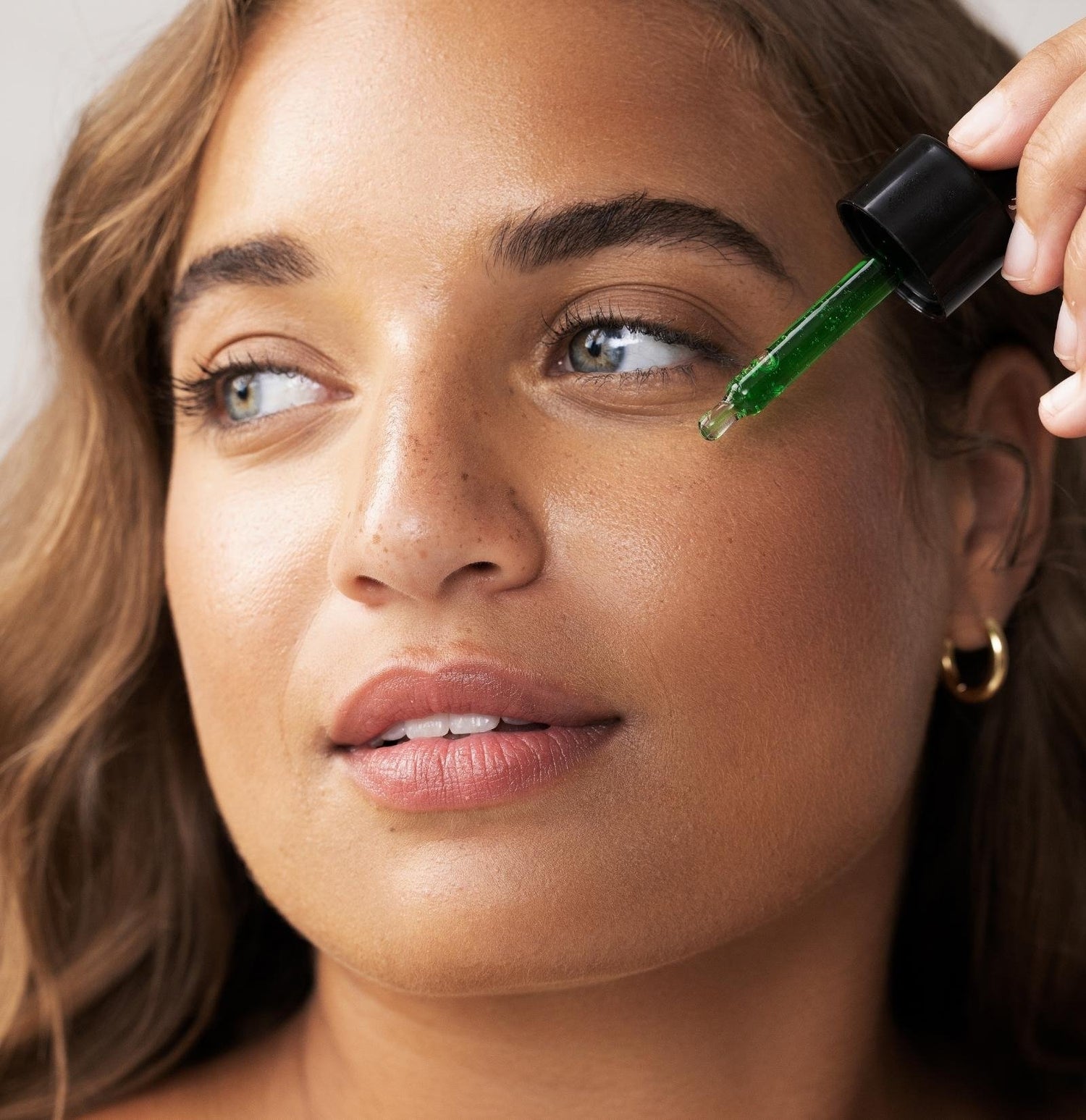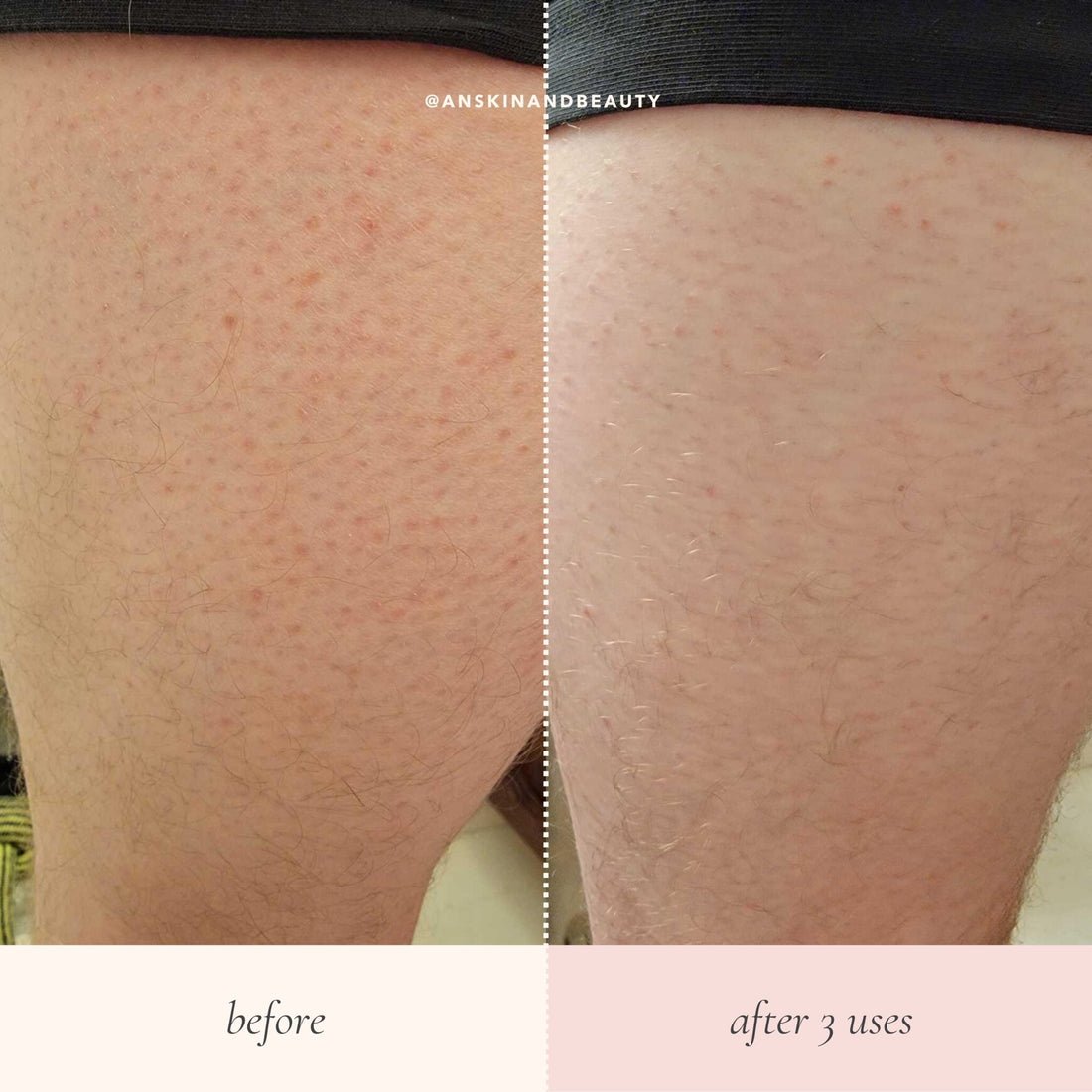Keratosis Pilaris. You may have heard of this condition being referred to as KP or also its nickname, “chicken skin.” It’s a fairly common condition affecting 40% of adults worldwide and 50-80% of teenagers at some point in their life. Even though this skin condition affects many people, you shouldn't have to suffer through it. Let’s dive into who may be struggling with this and what products can help address those pesky bumps.
WHAT IS KERATOSIS PILARIS?
It’s a harmless skin condition that causes dry, rough, and/or bumpy patches on the skin. The tiny red bumps can appear “acne-like,” but fret not because these bumps are not acne. KP develops when the skin produces excessive amounts of a protein called Keratin, which can block hair follicles and cause those tiny red bumps to develop. These bumps can most commonly be found on the arms, thighs, calves, cheeks, and buttocks. The tiny red bumps may appear white or red and don’t normally itch or cause pain.

Keratosis Pilaris (Condition on the leg region of the calf)
Image sourced from: https://en.wikipedia.org/wiki/Keratosis_pilaris
SAY BYE-BYE TO CHICKEN SKIN WITH OUR BODY COLLECTION!
At AN Skin & Beauty, we have developed our body line to rejuvenate, nourish, and help heal the skin. We carry two products that we especially love for Keratosis Pilaris management. First is our Body Glow Exfoliating Cleanser. Glycolic Acid and Salicylic Acid are two main ingredients in this cleanser that are commonly used to treat KP. Glycolic Acid is an AHA (Alpha Hydroxy Acid) that works to break down Keratosis Pilaris bumps and smooth the affected areas. While Glycolic Acid sloughs away dead skin cells on the surface of the skin, Salicylic Acid (BHA or Beta Hydroxy Acid), is able to deeply penetrate into the pores and exfoliate excess keratin that results in KP. If you struggle with Keratosis Pilaris, you need to be looking for a cleanser with Glycolic Acid and Salicylic Acid to target unwanted KP and improve its appearance. Luckily, both of these transformative ingredients can be found in our Body Glow Exfoliating Cleanser.

(Before and after using A|N Skin & Beauty’s Body Glow Exfoliating Cleanser)
After cleansing the affected KP areas, we recommend lathering up with our Body Smoothing Retinol Lotion 2-3 times per week. All-Trans Body-Grade Retinol is recommended to gently exfoliate the top layer of skin to reduce redness, smooth the skin, and improve the appearance of KP. When treating KP, you want to focus on using skincare ingredients that aren’t going to clog pores, such as Hyaluronic Acid and Squalane. We’ve included both of these oil-free ingredients in our Body Smoothing Retinol Lotion to help improve KP! Hyaluronic Acid is going to help rehydrate the skin after exfoliating to smooth and reduce irritation, while Squalane soothes and moisturizes.
A|N SKIN & BEAUTY’S TWO-STEP ROUTINE TO IMPROVE KERATOSIS PILARIS
If you suffer from KP, you know how pesky Keratosis Pilaris can be. This is why we suggest a two-step approach to really getting it gone. First, we suggest that you use the Body Glow Exfoliating Cleanser to effectively exfoliate, deeply cleanse pores, and smooth the skin. Second, follow up with the Body Smoothing Retinol Lotion to smooth skin and reduce redness. A|N Skin & Beauty is here to help you love your skin more! The Body Collection was created for every body as it helps rejuvenate, gently exfoliate, and improve the appearance of your skin.
If you think you may have Keratosis Pilaris, consult with a physician to diagnose this condition.
Sources:
- “Keratosis Pilaris: What It Is, Causes, Symptoms & Treatment.” Cleveland Clinic, my.clevelandclinic.org/health/diseases/17758-keratosis-pilaris#:~:text=Keratosis%20pilaris%20is%20so%20common. Accessed 10 June 2022.


